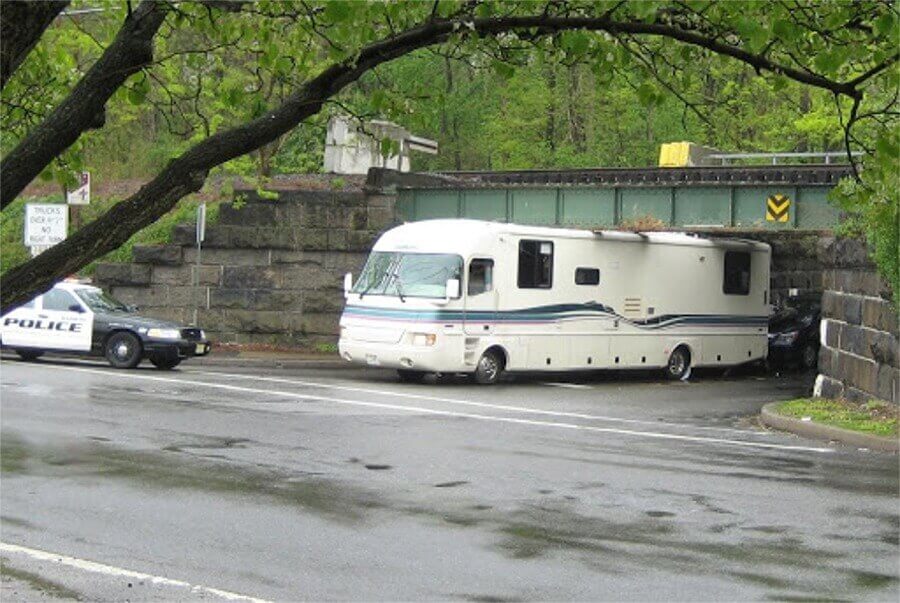 Maybe you are new to RVing, without past experience at driving large vehicles. You may think the turning radius and the huge blind spots on your motor home might be the most difficult parts of driving your camper. After all, it takes practice to learn to drive it, back up, or park it properly. Just don't forget that besides driving mechanics, your RV is also a lot taller than most vehicles too. Not to mention all the rooftop RV accessories, like the air conditioner and roof vent covers that add even more inches to the RV's total height. Even if you are an experienced RV'er, you may be taking a road trip in an area you've never been to before, and you don't want to be caught unaware of a low clearance.
Maybe you are new to RVing, without past experience at driving large vehicles. You may think the turning radius and the huge blind spots on your motor home might be the most difficult parts of driving your camper. After all, it takes practice to learn to drive it, back up, or park it properly. Just don't forget that besides driving mechanics, your RV is also a lot taller than most vehicles too. Not to mention all the rooftop RV accessories, like the air conditioner and roof vent covers that add even more inches to the RV's total height. Even if you are an experienced RV'er, you may be taking a road trip in an area you've never been to before, and you don't want to be caught unaware of a low clearance.
The first thing to make sure of is the total height of your RV. This includes whatever rooftop accessories you might have. If your RV can clear a certain height, that doesn't mean a
satellite dish, vent, or AC unit will. To truly be certain of your RV's height, you should physically measure it yourself. If you have a fifth wheel trailer, measure the height with the trailer hooked up, as it would be during travel. If you add or switch out rooftop accessories, remember to re-measure your RV's height in case the highest point has changed. Once you have an accurate measurement, you should add a few inches to that, to act as a buffer. It's a good idea to then make a note of that measurement in both feet and meters, and place it where you can easily check it when you drive.
During travel, keep in mind that clearance signs may not always be accurate. The height they show may be greater than the actual clearance height. This is due to the fact that re-paving a road shortens the clearance by a couple inches and the sign may not be current. As a result, you should take a few inches off the height shown on the sign, just in case. On the interstate, this is not as much of a problem, as most bridges there are made to accommodate semi trucks. As you move away from the interstate, clearance heights can vary more often. Also be aware that not all bridges will have heights given in advance.
Bridges are only part of the equation. Clearance heights also come into play with gas station canopies, bank canopies, drive-thrus, and power lines. A GPS made especially for RV travel can be a useful tool, as it will note most low clearance bridges, but they are not 100% foolproof. They need to stay updated to have the most accuracy, and do not warn you of gas station canopies or power lines. Check your campground's website before you leave. The directions given on the website might have easier roads to drive than the GPS recommends. Truck stops are usually safe when it comes to getting fuel. Off the highway, if you are unsure of a gas station canopy height, choose the outside pump and position your rig so that it will not pass under the roof. In the event that you come to a questionable clearance and have no choice, go under it very slowly. If you end up hitting it, don't immediately try to back out without making sure it's safe to do so. Be aware that if you do hit a low clearance point, you are responsible for whatever damage is incurred, whether or not the sign gave the correct height.